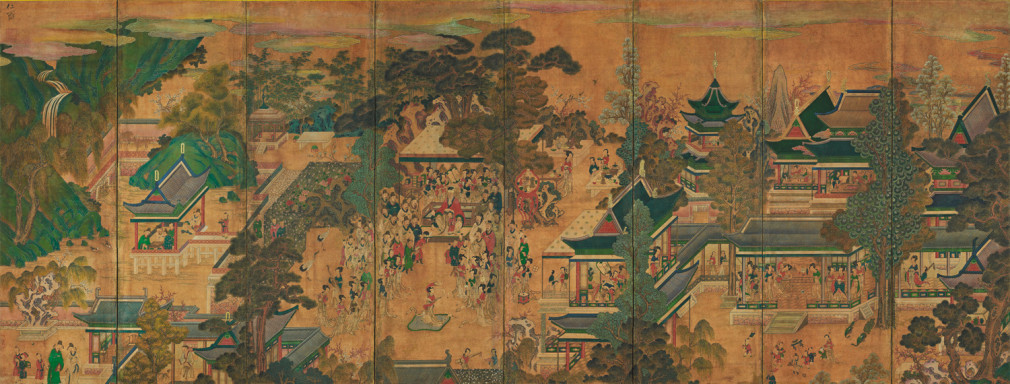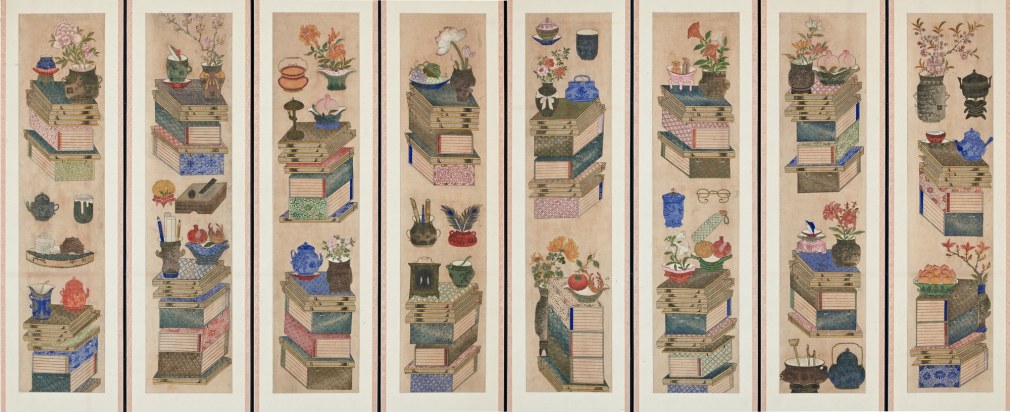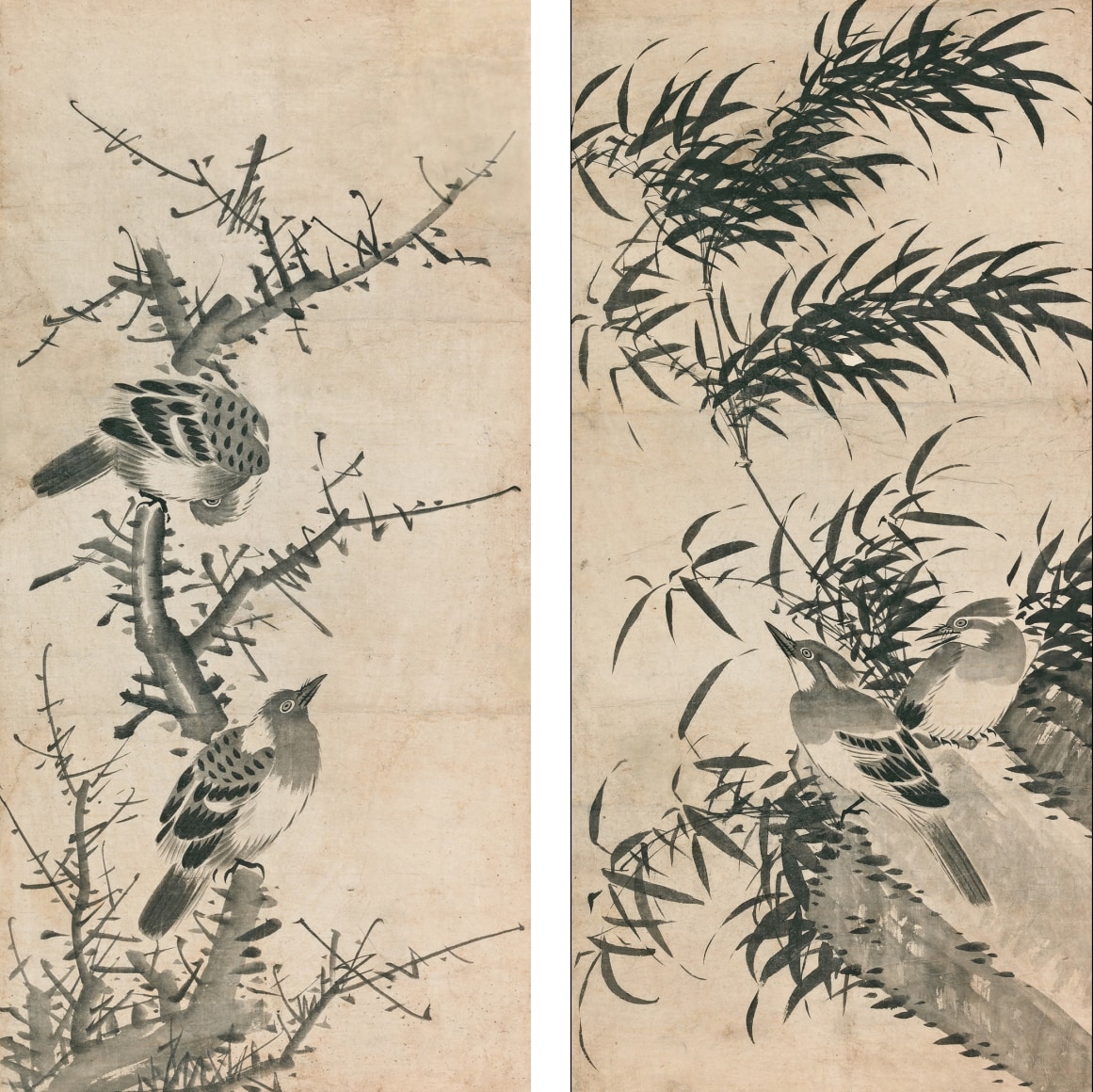Kang Collection Korean Art is pleased to present a groundbreaking and rare collection of folding screens and ink paintings from the 18th to 19th century Royal Court. Highlights include:
Eight-panel Lotus and Birds Screen, 19th century, Korea, 64 x 168 in
Painted exquisitely in Royal Court style, this screen is a whole complex of auspicious symbols of luck, fecundity, and love, created to celebrate the union of a newly married couple.
Eight-panel Guo Ziyi’s Banquet screen, 18th-19th century, Korea, 68.5 x 176 in
This screen depicts Guo Ziyi, the Tang Dynasty legendary general, holding a banquet with his numerous descendants and followers. Illustrated with various symbols including deer, peacocks, and elixir plants, the screen carries wishes for a prosperous long life and
many offspring.
Eight-panel Orchids and Rocks by Prince Regent Yi Ha-Ung (1820-1898), 6 ft x 13 ft 10 in
Prince Regent Yi Ha-ung (ho:Seok pa), father of King Gojong (reg 1863-1907) and a powerful political figure, is recognized as Korea’s greatest painter of orchids and rocks. They are most popular subject matters of scholar-gentleman painters, being symbols of purity,
integrity, and noble character. Yi depicted gracefully elongated, sharply pointed leaves and delicate blossoms in his highly personal style.
The folding screen was an integral part of the Royal Palace as well as upper-middle class household during the Joseon Dynasty (1392-1910). Throughout the Royal Palace, the screens decorated Court pavilions, ladies’ bedrooms as well as the men’s quarters. During festivals, ceremonies, and rituals, these screens with their auspicious symbols and decorative paintings, provided a stately and sumptuous backdrop.






